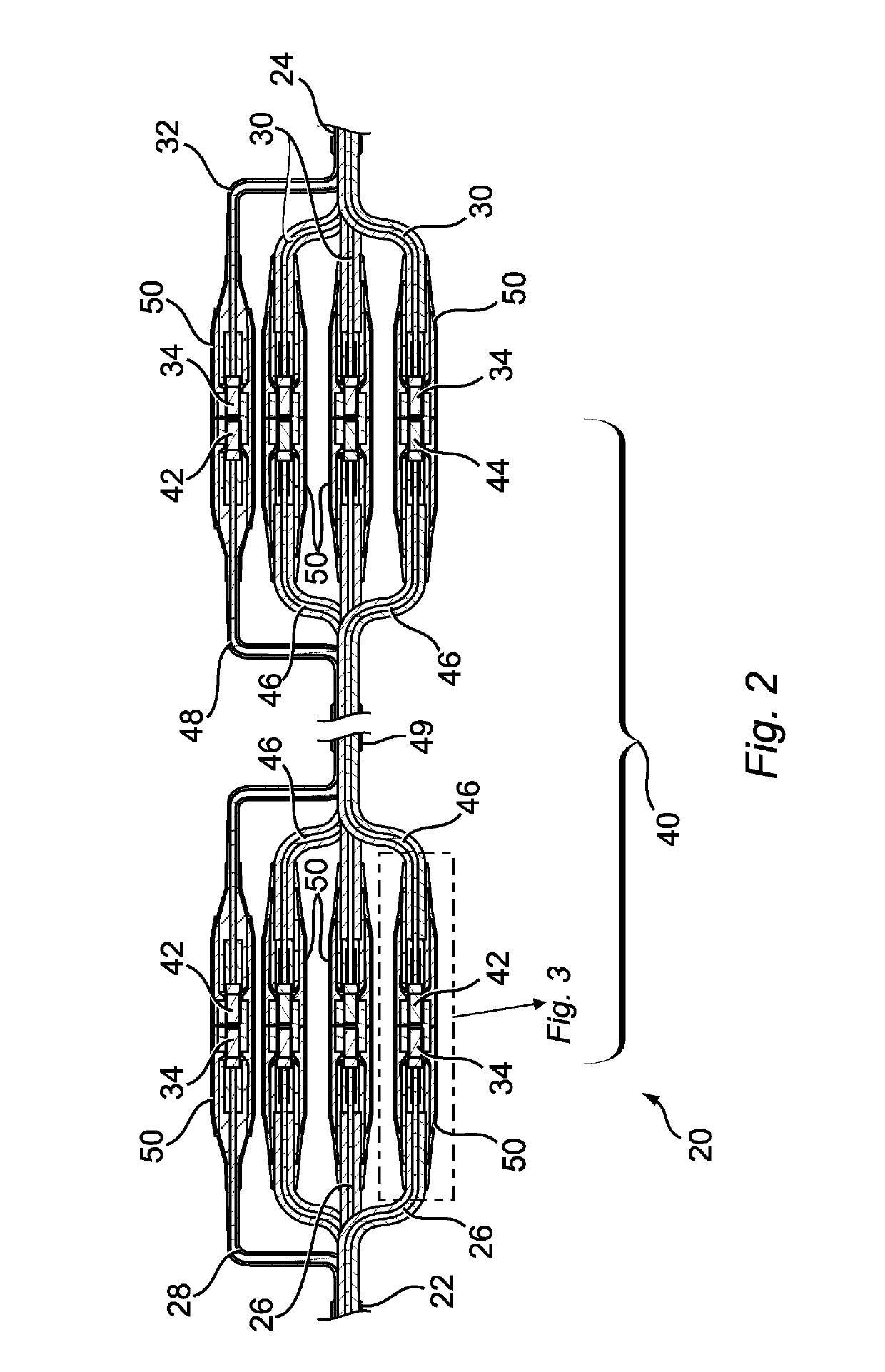PIP trace heating connection assembly
a heating connection and assembly technology, applied in the direction of heating elements, lighting and heating apparatus, coupling device connections, etc., can solve the problems of time-consuming process, risk of hydrate plugging and wax formation, etc., and achieve the effect of quick assembly and quick method of joining
- Summary
- Abstract
- Description
- Claims
- Application Information
AI Technical Summary
Benefits of technology
Problems solved by technology
Method used
Image
Examples
Embodiment Construction
[0082]FIG. 1 is a schematic plan view of a typical spoolbase layout for a PIP construction process, and for reeling onto a lay vessel. From left to right, there is a fabrication building 2 with initial welding stations to form the initial pipe lengths towards a first tie-in station 4, where trace heating cables 14 are added from cable reels around the flowline 12, and insulation is also added along with spacers; prior to insertion of the combination into the outer or carrier pipe 10 and towards the reel lay vessel 18.
[0083]Insert G is an enlarged view of a stalk tie-in station 6 for the joining of a newly formed PIP stalk 16a to an existing PIP stalk 16b already mostly reeled onto the vessel 18. Conventionally at the station 6, the two flowlines 12 are first welded together, and then the heating cables 14 are spliced directly together, to join them and so form a continuous electrical connection along the PIP pipeline. Insulation and spacers are then added around the spliced heating ...
PUM
 Login to View More
Login to View More Abstract
Description
Claims
Application Information
 Login to View More
Login to View More - R&D
- Intellectual Property
- Life Sciences
- Materials
- Tech Scout
- Unparalleled Data Quality
- Higher Quality Content
- 60% Fewer Hallucinations
Browse by: Latest US Patents, China's latest patents, Technical Efficacy Thesaurus, Application Domain, Technology Topic, Popular Technical Reports.
© 2025 PatSnap. All rights reserved.Legal|Privacy policy|Modern Slavery Act Transparency Statement|Sitemap|About US| Contact US: help@patsnap.com



